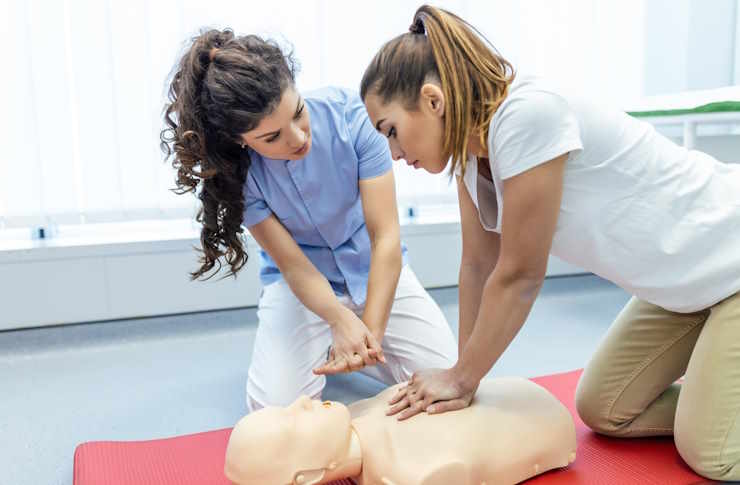Medical Assistant Training: Your Complete Career Guide
Explore how medical assistant training can jumpstart your healthcare career. This comprehensive guide explains who can apply, program lengths, core coursework, hands-on practicum, estimated costs, certification options, and job prospects so you can pick the right program, prepare for credentialing, and start patient-focused work.

Medical Assistant Training: Your Complete Career Guide
Medical assisting is a practical, fast-paced entry into healthcare that blends clinical duties with administrative work. Whether you want hands-on patient care, front-desk responsibilities, or a combination of both, the right training program builds the technical know-how and professional readiness employers seek. This guide walks through who can enroll, typical program durations, core subjects and practicum experiences, expected costs, certification pathways, job possibilities, and tips for choosing the best program for your goals.
Who can enroll?
Admission requirements are generally simple but vary by school. Common prerequisites include a high school diploma or GED, a minimum age (often 18), and a valid photo ID. Schools may expect basic computer literacy for electronic health record navigation and scheduling, plus sufficient English proficiency for documentation and patient communication.
Many programs require a criminal background check and drug screening if clinical placements are part of the curriculum, and some clinical sites ask for current immunizations. Certain institutions may request prior coursework such as biology or math, placement testing, or letters of recommendation. Review admissions pages early to gather transcripts, vaccination records, and any other required documentation before applying.
Program lengths and credential types
How long training takes depends on the credential and whether you study full- or part-time:
- Certificate programs: about 6 months to 1 year
- Diploma programs: roughly 9 months to 1 year
- Associate degrees: typically 2 years
Certificates and diplomas concentrate on core, job-ready competencies and usually lead to employment sooner. Associate degrees include general education courses that can help with career advancement or make transfer to other allied health programs easier later on.
Curriculum and practical experience
Medical assistant programs combine classroom learning with supervised practical work. Typical topics include medical terminology, anatomy and physiology, and clinical documentation. Hands-on clinical skills often cover taking vital signs, drawing blood (phlebotomy), giving injections, basic laboratory techniques, specimen handling, and medication administration basics.
Administrative coursework generally addresses front-desk processes like appointment scheduling, patient check-in, customer service, medical coding and billing fundamentals, and electronic health record (EHR) management. Programs also focus on patient communication, cultural competency, professionalism, and legal and privacy requirements such as HIPAA.
Most programs include a clinical practicum or externship where you apply classroom knowledge in real healthcare settings under supervision. These placements are invaluable for building confidence, developing professional references, and improving your chances of being hired after graduation.
How much does training cost?
Tuition and fees vary by program type, institution, and location. The table below gives common ranges to help with budgeting. Some programs include books or supplies while others charge extra.
| Program Type | Institution Type | Estimated Cost Range |
|---|---|---|
| Certificate | Community college | $2,500 - $10,000 |
| Diploma | Vocational school | $5,000 - $15,000 |
| Associate Degree | Community college | $10,000 - $25,000 |
| Associate Degree | Private college | $20,000 - $40,000 |
Cost disclaimer: Prices are estimates and may change; confirm current tuition, fees, and what’s included (books, supplies, exam fees) with each school before enrolling.
Additional costs can include immunizations, background checks, uniforms and basic equipment (stethoscope, scrubs), certification exam fees, and travel to clinical sites. Many students qualify for federal or state financial aid, scholarships, payment plans, or employer tuition assistance—check with a school’s financial aid office for options.
Certification and state considerations
Medical assistants are not licensed in most states, but employers often prefer candidates who hold national credentials. Two common credentials are the Certified Medical Assistant (CMA) from the American Association of Medical Assistants and the Registered Medical Assistant (RMA). Graduating from an accredited program strengthens eligibility for these exams and can make you more competitive in the job market.
If you plan to work in a state with specific scopes of practice or in settings with special requirements, verify local regulations and employer expectations before selecting a program.
Career opportunities and outlook
Graduates can find roles across many healthcare settings, including physician offices, outpatient clinics, community health centers, hospitals, and specialty practices. Typical job titles include clinical medical assistant, administrative medical assistant, specialty medical assistant (for example in pediatrics or cardiology), medical office manager, medical records technician, patient care coordinator, and healthcare customer service representative.
Employment for medical assistants is projected to grow faster than average as healthcare needs expand and clinics seek efficient clinical and administrative support. Gaining experience, pursuing additional certifications, or continuing education can lead to supervisory positions or specialized clinical roles.
How to choose the best program
When comparing programs, consider accreditation, program length, hands-on clinical placement opportunities, graduation and job-placement rates, faculty experience, tuition and financial aid availability, and whether the curriculum prepares you for national certification exams. Visit campuses, talk with admissions counselors, and, if possible, speak with recent graduates or local employers to learn how alumni perform on the job.
Completing medical assistant training is a practical stepping-stone into healthcare, offering diverse pathways and clear steps toward certification and employment. Whether you want quick entry into patient-centered work or a foundation for further healthcare education, a well-chosen program can set you on a steady, rewarding career path.
This article is for informational purposes only and should not be considered medical advice. Please consult a qualified healthcare professional for personalized guidance and treatment.






